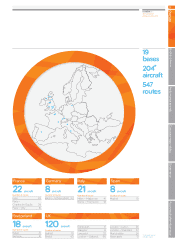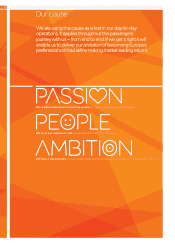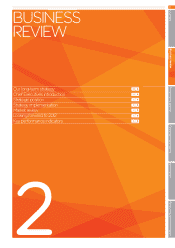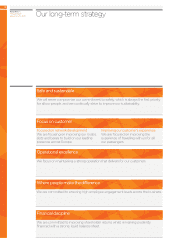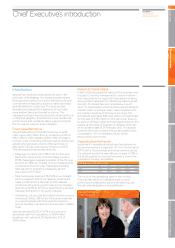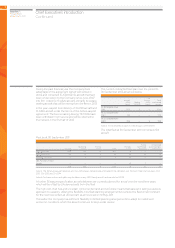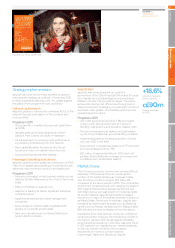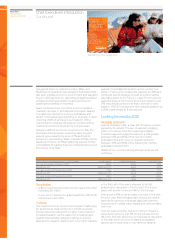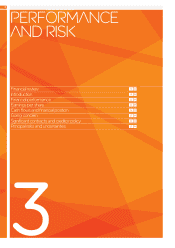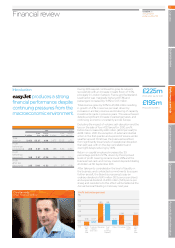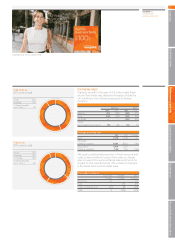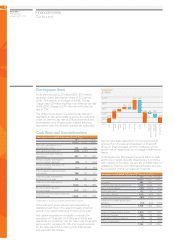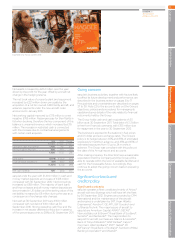EasyJet 2011 Annual Report Download - page 17
Download and view the complete annual report
Please find page 17 of the 2011 EasyJet annual report below. You can navigate through the pages in the report by either clicking on the pages listed below, or by using the keyword search tool below to find specific information within the annual report.
easyJet plc
Annual report
and accounts 2011
15
Overview Performance and risk Corporate responsibility Governance Accounts & other information
Business review
At current fuel7 and exchange rates easyJet’s fuel bill is anticipated to increase by £220million in 2012
comparedto 2011.
Despite the headwinds of higher fuel costs and a weak and uncertain economic outlook, our focus on customers,
robust operational performance, the strength of easyJet's network combined with cost control and capital
discipline means that easyJet is well placed to succeed.
Note 7: Rates as at 14 November 2011: US$1.59/£, €1.17/£ and US$1,075 per metric tonne.
Financial objectives and metrics
Objectives Measures
Return targets – Earn returns in excess of cost of capital
through the cycle
– Invest in growth opportunities where returns
are attractive
– After tax ROCE of 12% through the cycle
– Improve profit before tax per seat to £5
Capital structure
and liquidity
– Ensure robust capital structure
– Maintain sufficient liquidity to manage through
the cycle and industry shocks
– Return excess capital to shareholders
– Maximum gearing of 50% (gearing meaning
debt plus seven times annual lease payments
less cash) divided by (shareholders’ equity plus
debt plus seven times annual lease payments
less cash)
– Cap of £10 million adjusted net debt per aircraft
Target £4 million cash per aircraft
Dividend policy – Target consistent and continuous dividend
payout
– Five times cover, subject to meeting gearing
and liquidity targets
– Annual payment based on full year profits after
tax; introduced for year ended 30September
2011, payable 2012
– Consider returns over five times cover to
reduce excess capital
Aircraft ownership – Maintain flexibility around fleet deployment
and size
– Target of 70% owned aircraft, 30% leased
aircraft
Fuel hedging – Insulate short-term operating performance
against adverse movements in fuel price and
exchange rates
– 65%–85% of the next 12 months’ anticipated
requirements
– 45%–65% of the following 12 months’
anticipated requirements
Carolyn McCall OBE
Chief Executive


